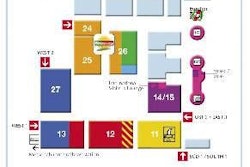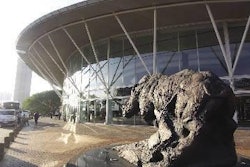Two events due to have taken place in May many thousand of kilometres apart would have had a link of sorts, even though one was on poultry and the other on pork. The event that went ahead as planned was in Rome, Italy, and involved the latest annual meeting of the International Poultry Council -- the IPC -- an organisation that unites representatives of the chicken and turkey industries in various parts of the world. The other was supposed to be a preliminary discussion during a congress in China about starting an IPC-like international federation of national and regional associations in the pork sector.
In fact the Chinese discussion could not take place as intended because of lack of time to complete the necessary preparation. Even the name of the proposed body remains undecided, although several people have suggested that it could be called the World Pork Council.
Primary motivation
Without doubt, a primary motivation for proposing such a WPC was the IPC's continued success in providing a single-world voice for poultry meat interests from around the globe. Pork is perceived to lack any similar representation. Yet the case for establishing one is reinforced every day by the financial crisis and by issues surrounding global trade.
So do not expect the initiative for a World Pork Council to have died. We can expect to hear it revived before long. It may not end up with that name and its form is uncertain but there is enough support internationally for the general idea to be sure of bringing it to the surface at one or other of the global meat events announced for later in the year.
This October will bring another reminder of the changing scene for pig medicine at world level. It is when the Asian Pig Veterinary Society holds its next gathering. This time, the congress is scheduled for Japan. Previous editions have been in Korea, Philippines and China.
Established as recently as 2001 and an organiser of biennial congresses since 2003, the APVS by its existence again raises questions over the future structure of swine veterinary meetings worldwide.
Let me remind you that we have had an International Pig Veterinary Society since 1969. As from Germany in 1972, its congress has been held every two years, always at a different location. Last year the IPVS went to Durban in South Africa. In July 2010, it moves to Vancouver in Canada.
Without a doubt the IPVS model has worked well so far, providing a meeting place for all those with a professional interest in pig health and related production issues. However, the model does have some more questionable aspects for the future.
There is one question that surrounds the central issue of funding. To keep participation affordable for delegates who must travel long distances, the congress has relied on sponsorship money from animal health companies. These not only put funds directly into the event, they also assist towards the travel costs of a significant number of delegates each time.
But as you must have noticed, the number of suppliers of animal health products continues to be eroded by mergers and acquisitions. We must be close to a tipping point where there are too few potential sponsors for global pig veterinary congresses.
What is more, the IPVS model has always relied on the work of organising a congress being done entirely by a group of people in the host country. It has meant little or no continuity between the congresses. Worse still, there are few groups of any type with the resources and expertise to handle a modern congress attended by over 2,000 delegates and accompanying persons from all over the world.
This is not even to mention the certainty that travel will become increasingly expensive in the coming years. More regionally focused events on a smaller scale would seem to be the way forward.
This is where regional groupings such as the APVS for Asia come in. There has long been a counterpart for the Americas in the form of the American Association of Swine Veterinarians, that holds its own conference annually. The most obvious gap in the geographic jigsaw is in Europe. There is no European association of veterinarians specialising in pigs.
In fact, there remains a need in Europe for a unifying body that will also handle credentials, qualifications and further education for these specialists. Clearly, a European association could arrange its own regional congress every two years, if that was wanted. There may even be sponsorship to make it happen, by bringing in the smaller players of the health world.
Perhaps one major objection will stop this happening. The veterinary researchers and practitioners who go to IPVS meetings have voted more and more for the next congresses to be in exotic locations. In other words, these are becoming as much about tourism as about education or professional networking and this does not fit so well to the principle of a forum that is regional rather than global.

















